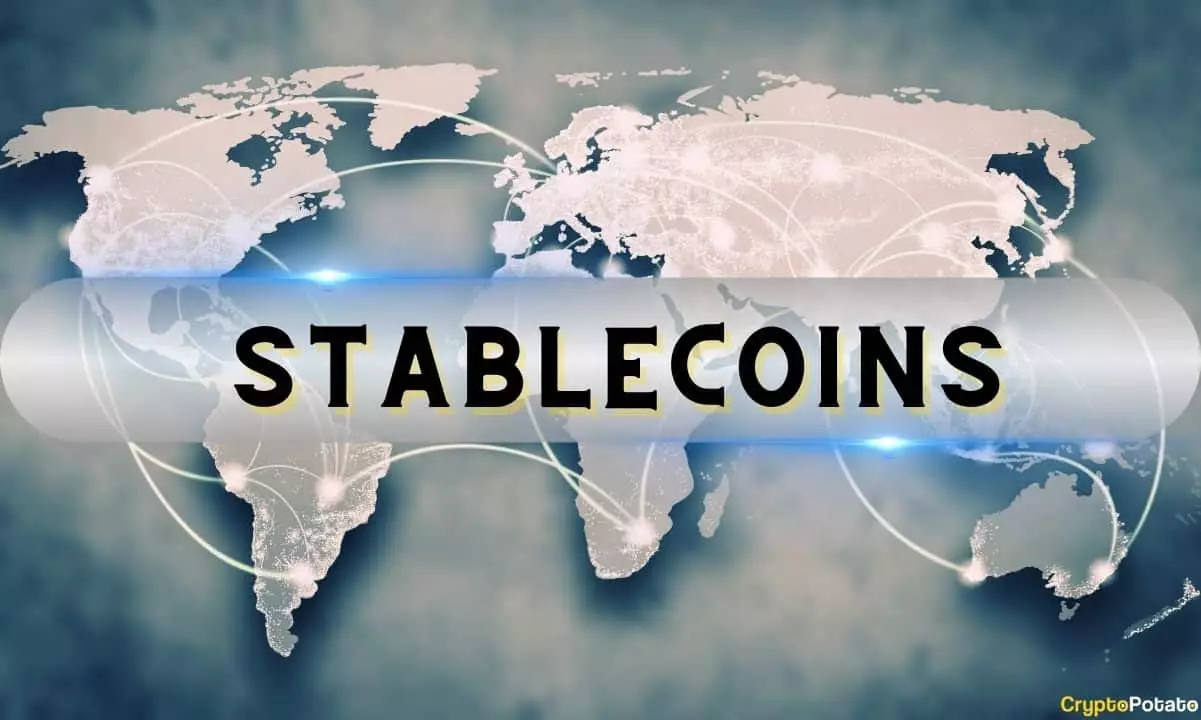In a staggering display of market power, the fiat-backed stablecoin sector witnessed an explosive growth of over 76% from 2024 to 2025, swelling in value to a staggering $224.9 billion. However, beneath this impressive figure lies a tale of disparity and dominance. The giants of the field, Tether’s USDT and Circle’s USDC, have effectively monopolized the landscape, controlling a remarkable 93.5% of the circulating supply. This raises a tantalizing question about the barriers to entry for newcomers in the cryptocurrency ecosystem: What does it take for a stablecoin to achieve similar prowess?
While fresh contenders such as Ethena’s USDtb and Usual’s USD0 have emerged, painting a picture of healthy competition, their impact pales in comparison to the established behemoths. The dominance of USDT and USDC raises valid concerns about the health of competition within the market, and whether those looking to innovate will be stifled by the overwhelming force of these incumbents. Consequently, the fiat-backed stablecoin market stands as a microcosm of the broader financial ecosystem, where a few powerful entities dictate the rules, leaving others to grapple with limited visibility.
Traditional Finance’s Struggle with Crypto-Natives
The struggle faced by traditional finance-backed stablecoins such as PayPal’s PYUSD and Société Générale’s EURCV offers a poignant illustration of the uphill battle these institutions are fighting. Despite their backing from recognizable finance brands and adherence to regulatory standards, they have found themselves ensnared in a market dominated by crypto-native players. This mismatch speaks volumes about the difficulty traditional finance faces when attempting to compete within a technology-driven arena.
These legacy institutions, armed with financial muscle and a wealth of history, have surprisingly failed to gain traction. It raises a profound concern: Are traditional financial institutions out of touch with the needs of modern investors? Given the user-friendly nature of crypto-native solutions, it is no wonder that these lesser-known players continue to flourish while their traditional counterparts struggle for relevance. The market whispers a clear message: Changing consumer preferences and technological innovation have rendered the old guards vulnerable and, arguably, archaic.
The Rise of Commodity-Backed Tokens
Interestingly, while fiat-backed stablecoins monopolize the stablecoin market, the trend is different for commodity-backed tokens, which witnessed a notable market cap surge of 67.8% to reach $1.9 billion. This segment, albeit small, gained traction, driven by a parallel increase in gold prices amid growing economic and geopolitical uncertainties. Herein lies a paradox; commodity-backed tokens are burgeoning as a hedge but still lack the market share of their fiat counterparts.
Yet, despite their rise, they remain dwarfed by the overarching influence of fiat-based offerings, controlling only 0.8% of the total fiat-backed stablecoin value. This begs the question: Is there a ceiling for how much traction these assets can secure in the shadow of the fiat goliaths? The demand for tokenized commodities may suggest a resilient interest, yet the failure to achieve greater adoption indicates a disconnect with mainstream markets. The focus should shift towards fostering growth while simultaneously competing against more established assets.
The Tokenized Treasury Phenomenon
Amidst the fluctuations in traditional and commodity-backed assets, a much-needed glimmer of innovation shines from the tokenized treasury market. With a remarkable valuation leap to $5.6 billion—an astonishing 544.8% increase—this sector has proven itself as the most dynamic category in real-world assets (RWAs) during this period. The unexpected trigger for this rapid advancement appeared to be the introduction of sweeping trade tariffs, which prompted investors to seek safer havens.
In the wake of these measures, the tokenized treasury market rapidly expanded, with BlackRock’s BUIDL token emerging as a formidable leader, accounting for 44% of the total market by April. The rise of digital treasury assets symbolizes a pivot towards safer investments during times of volatility. This newfound interest aligns well with the evolution of blockchain technology and suggests that the future for tokenized treasuries could be rife with opportunities—if they manage to secure broader user participation beyond the roughly 11,000 active addresses.
While the crypto landscape grows ever more complex, it becomes undeniably clear that stability does not inherently equate to consistency. The stark realities laid bare by the successes and failures of various players in the stablecoin arena underscore the multifaceted challenges ahead. The juxtaposition of thriving and struggling entities serves to illustrate a market at a crossroads, filled with potential yet fraught with obstacles that will shape its future trajectory.


Leave a Reply